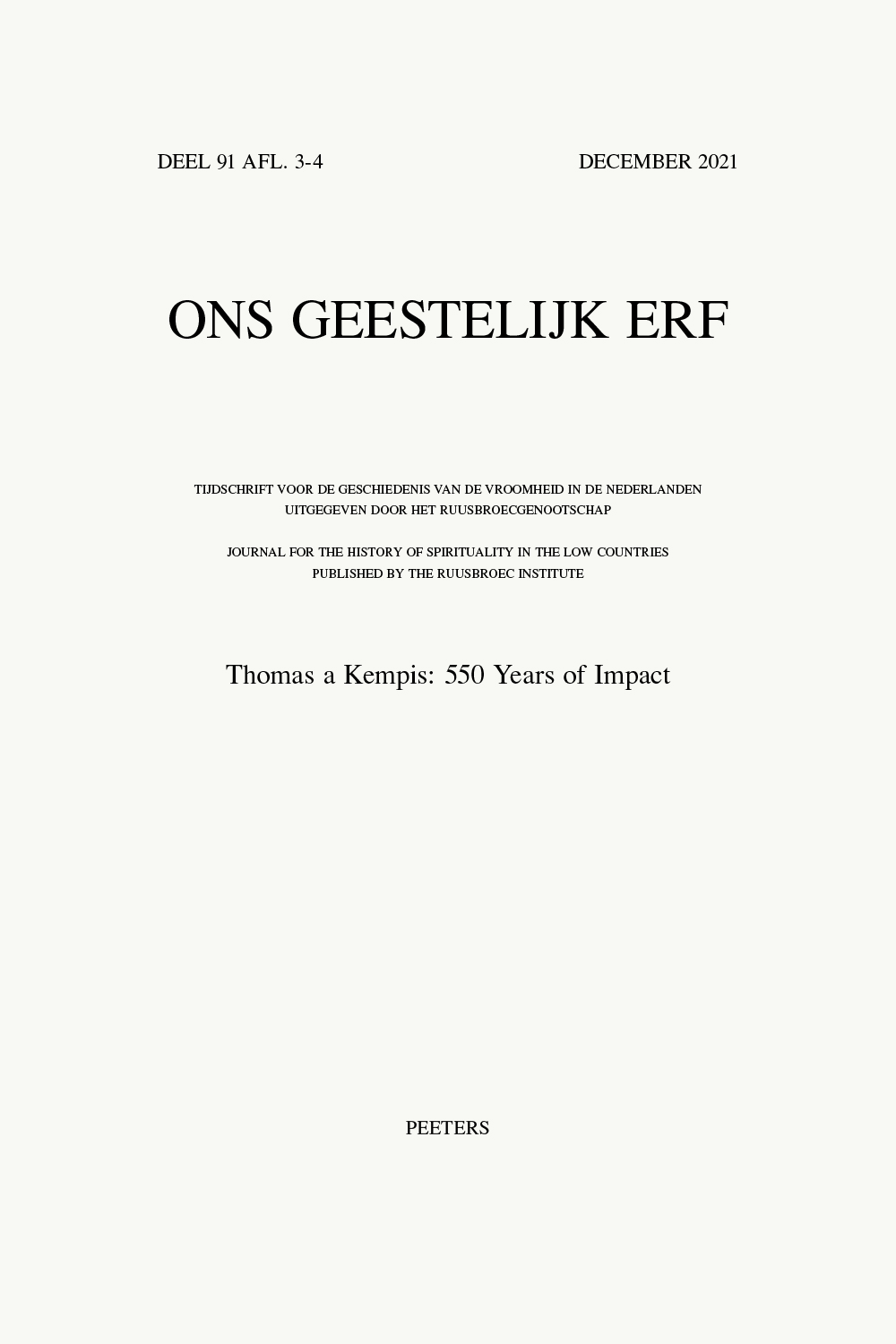 previous article in this issue previous article in this issue | next article in this issue  |

|
Document Details : Title: Soe ware geen hoge maer in waen (Hadewijch, Lied 16, vs 69) Subtitle: De filologische geschiedenis van een weerbarstig vers Author(s): FRAETERS, Veerle Journal: Ons Geestelijk Erf Volume: 91 Issue: 1-2 Date: 2021 Pages: 218-247 DOI: 10.2143/OGE.91.1.3289295 Abstract : This article analyzes the philological history of a difficult passage in one of Hadewijch’s best known songs, Song 16 (also: Stanzaic Poem 17). The article begins with a thematic discussion of the song as a whole, followed by a comparative presentation of the text of the stanza in question in the three main extant manuscripts A, B, and C. It then critically discusses the editorial history of this crucial verse, from the oldest, nineteenth-century editions based on MS A and the twentieth-century editions based on MS C to the most recent edition, published in 2009, which again used MS A. The survey shows that the passage was grammatically analyzed in very diverse ways, while as to the interpretation, two competing readings were put forward, by the Dutch literary scholar Marie van der Zeyde and the Flemish Jesuit philologist Jozef Van Mierlo, respectively. Despite differences as to the manuscript exemplar used and to grammatical analysis, the latest edition of 2009 backs the view of Van der Zeyde. This editorial microhistory sheds new light on 145 years of Hadewijch scholarship while also opening up new research perspectives. First, it highlights the importance within the manuscript tradition of MS B, which, as a direct copy of A, has hitherto been given little scholarly attention. Second, it adds a new chapter to the well-known conflict between Van der Zeyde and Van Mierlo and provides exemplary insight into the impact of ideology on interpretation. Third, it demonstrates the value of a functionalistic approach of Hadewijch’s songs as mystagogic works rather than expressive lyrics. |
|
